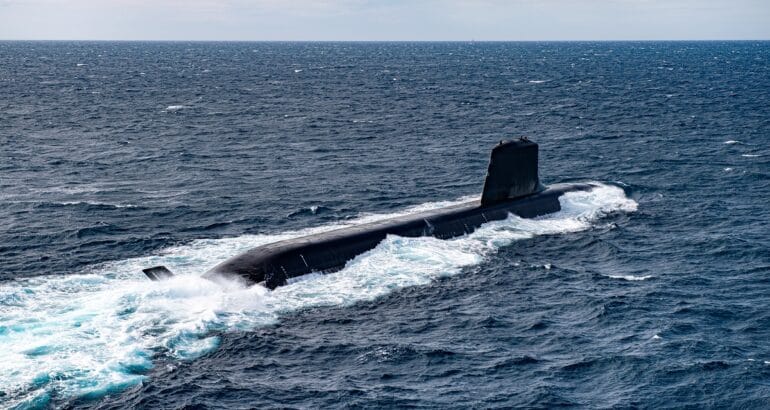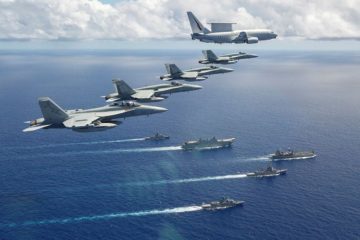Australia last week announced its intention to acquire at least eight nuclear-powered submarines (SSN) as part of an enhanced trilateral security partnership between Australia, the UK and the US dubbed AUKUS. This announcement also means the end of the Attack Class Submarine Program which sparked a major diplomatic crisis between France and its three allies.
For the record, the Australian Government selected Naval Group (then known as DCNS) as its preferred international partner for the design of 12 Future submarines for the Royal Australian Navy on April 26 2016. In the SEA1000 project, DCNS was competing with the Shortfin Barracuda design against Germany’s ThyssenKrupp Marine Systems (TKMS) Type 216 and Japan’s Soryu-class designs. Based on the new Barracuda nuclear-powered attack submarine (SSN) of the French Navy (the first ship has already been delivered), Australia’s Attack-class submarine was set to be 97 meters in length and 8.8 meters in diameter. Lockheed Martin was announced as the Future Submarine Combat System Integrator in September 2016 and the Design Build and Integration Contract was signed 12 January 2018.
The recently cancelled Attack-class program was set to see the first of twelve new submarines start construction in 2023 and be delivered in the mid-2030s. The new plan under the AUKUS initiative aims at starting to build the first of at least eight SSNs from the 2030ies.
In this context, Hervé Grandjean, spokesman of the French Mod published today a long and detailed thread on Twitter:
France and submarines are a serious business.
Over the past 120 years, France has built more than 250 submarines, including more than 230 conventional-powered ones. The feedback in terms of engineering and know-how is considerable.
The French project benefited directly from the technological assets of the Suffren nuclear attack submarine, as well as from Naval Group’s expertise, gained from numerous Scorpene programs sold for export (Chile, Malaysia, India, Brazil)
In many ways, the performance of the Attack submarine offered by France to the Australians was better than that offered by a nuclear submarine. Why?
Particularly in terms of acoustics, the discretion of a conventional submarine remains under certain circumstances paradoxically better than that of a nuclear submarine: a conventional submarine does not have a permanent cooling system for its reactor in operation.
The silent speed (at which a submarine can listen without being detected) was particularly high thanks to the pump-jet technology, that very few countries master.
The submarine proposed to Australia was of oceanic class, meaning it had very high autonomy and range capabilities.
France and Australian submarines: the customer is king
In 2009, the Australian Defence White Paper, two years after the start of the Collins replacement project, already said: “The Government has ruled out nuclear propulsion for these submarines”.
In August 2021, the joint press release of the French and Australian defense and foreign affairs ministers still stated, “Ministers underlined the importance of the Future Submarine program.”
On the same day as the AUKUS announcement, the Australians wrote to France to say that they were satisfied with the submarine’s achievable performance and with the progress of the program. In short: forward to launching the next phase of the contract.
Returning to the surface to recharge the batteries is inherent to a diesel-electric submarine. This was the Australian request.
A nuclear submarine has, by nature, a greater projection capability than a conventional submarine. The planned tonnage of the SM Attack (between 5,000 and 6,000 tonnes) was large enough to provide the projection capability required for Australian naval operations.
The Australian choice: bad news for… the Australians.
The first Attack submarines were to be delivered by 2030. With this new AUKUS partnership, it will be more like 2040. That’s a long time, when you see how fast China is militarizing…#FastIsBeautiful
According to a June 2021 Congressional Research Service report, the production costs of the last two Virginia SSNs ordered (35th and 36th) would be $6.91 billion, or $3.46 billion per unit (€2.95 billion). Much more expensive than a French Barracuda for example…#GoodManagement
The September 17 announcement indicates that the nuclear submarines will be built in Australia. But Australia says it does not want a nuclear industry, neither civilian nor military. #Coherence
Are we to understand that the United States will provide complete nuclear boiler rooms to be integrated into submarines, with teams of American technicians to ensure commissioning, maintenance and perhaps even operation? #Sovereignty
Investments in infrastructure capable of hosting nuclear submarines in Australia, necessary to prevent any environmental risk, will be expensive and complex. #Complexity






